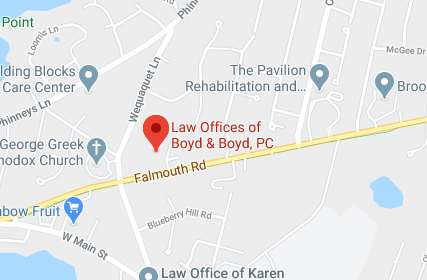A Personal Asset Trust℠ Offers Flexible Options to Protect Your Children’s Inheritance
When people engage in estate planning, they often want to protect their legacy and the gift they leave their loved ones. They may want to ensure those assets are protected for the use of their children and grandchildren. While basic estate planning with a will or a typical trust may make your wishes known, it doesn’t offer much asset protection, if any. Specially designed trusts provide better protection. Find out more about a specific trust tool, the Personal Asset Trust℠, below, including how it can help you protect your kids’ inheritance.
Traditional estate planning techniques leave an inheritance “to” a child or a grandchild. If some kind of protection was needed because the child was a spendthrift or was receiving needs-based government benefits, someone other than the child can be placed in charge of the inheritance as the trustee. Modern techniques, like the Personal Asset TrustSM, leave assets “for” the child or grandchild. With a Personal Asset TrustSM, it is possible to allow the child to be the trustee, and only when there is a problem will a co-trustee be added or used to replace the child as trustee. Once the problem is resolved, the child may be reinstated as the sole trustee.
What Is a Personal Asset Trust?℠
A Personal Asset Trust℠ is a unique type of trust that is built into and springs out of your own living trust. This allows ownership of the inherited assets to remain in the trust, to be controlled by the beneficiaries for their own use and enjoyment. The Personal Asset Trust℠ gives an heir more protection than if they received the inherited assets outright. Typically, a Personal Asset Trust℠ owns non-retirement assets.
To understand this concept, it’s best to compare the method of inheritance via a Personal Asset Trust℠ versus inheritance through a traditional trust:
- When you create a traditional trust, you place assets in the ownership of the trust. You also create provisions for how those assets will pass to your heirs upon your death. Generally, the assets that are to be inherited are distributed outright “to” your heirs upon your death. Some families use a stepped distribution where ownership is transferred when the beneficiary reaches certain specific age milestones — for example, typical ages for a stepped distribution might be something like one-third at 25, the second third at 30 and the final third at 35. But once the assets are distributed out of the trust, and the child owns the assets, any problem the child has can take the assets away from the child. For example, if the child was sued, the entire inheritance could be seized and taken from the child.
- With a Personal Asset Trust℠, ownership of the assets doesn’t move from the trust to the individual. Instead, ownership moves from the trust to a separate trust that is only for the benefit of that child. Your child can be the trustee and manage the assets. Additionally, the child will be the beneficiary and can use the trust assets as they need. The child can take money out of the trust to spend on consumables – pay bills, take a vacation, etc. But if they want to invest the assets (buy a house, invest in stocks & bonds, or to start a business) the child has the trust make the investment and own the investment for them. The key is that the trust continues to own the inheritance and because of that the inheritance will be protected from problems like a divorce, a lawsuit, a bankruptcy, tax liens or other creditor claims.
How Does a Personal Asset Trust℠ Add Protection for Heirs?
By leaving an inheritance in a trust for the benefit of your child you can give all the benefits of the inheritance without the risks of outright ownership. In fact, all fifty states recognize the concept of a third party settled asset protection trust. In this case you are the third party establishing the trust for the benefit of your child. Any existing or future creditors of your child will not be able to access the trust’s assets as long as your child honors the trust as a separate entity. If your child is going to be the sole trustee over the inheritance, it is also important for your child to use features like a trust protector that are built into the Personal Asset Trust℠. This method provides extended protection for your heirs because they never own the assets. The ownership remains with a trust. That means your heirs can benefit from the assets, but they don’t have the risks of ownership.
One example of a risk of ownership is a lawsuit. Imagine the following scenario:
- You have one adult child and they have two children.
- You leave assets to the adult child with hopes that there will be some left for the grandchildren.
- Your adult child is involved in an auto accident that was their fault, and they are sued.
- If your adult child owns the assets you left for them, those assets are at risk in the lawsuit.
- It’s possible that your adult child could lose all of the assets you left; there would be nothing for them and nothing left for your grandchildren.
However, if you had opted for estate planning that included a Personal Asset Trust℠, the assets you left are owned by the trust, not your child. The inherited assets can be protected from the lawsuit, so that the inheritance won’t be taken from your grandchildren.
When you create a Personal Asset Trust℠ for your child, you create a barrier for their assets against:
- Creditors. Creditors can’t sue them for the assets or attempt to take the assets, because your child does not own the assets in the trust.
- Lawsuits. As mentioned above, anyone suing your child can’t try to take assets that your child does not actually own.
- Spouses and ex-spouses. Because your child doesn’t own the assets, they aren’t considered marital property and can’t be targeted in property divisions as part of a divorce.
- Estate Taxes. If your child does own assets at death the government cannot assess an estate tax against the assets. That way an inheritance may pass from generation to generation without transfer taxes, potentially preserving hundreds of thousands of dollars for your family’s needs.
Can You Add a Personal Asset Trust℠ to an Existing Trust?
Yes, you can add this option to an existing revocable trust via an amendment. If you’ve already invested time and money into creating a living trust, amending it in this way can be a cost-effective way to provide future asset protection for your heirs.
What If You Have Large Qualified Retirement Accounts like IRAs or 401(k)s? Can they be protected by a Personal Asset Trust℠?
First, you should never try to change the ownership of a retirement account into any kind of trust. The tax code treats a change of ownership of a retirement account as a complete withdrawal of all of the retirement funds, which makes the full balance of the retirement account taxable income. So, can you name a Personal Asset Trust℠ as the beneficiary of a retirement account? Because the rules governing IRAs are so complicated, it is not recommended that Personal Asset Trust℠ be the beneficiary of retirement plans.
Instead, there is a specialized trust, designed to be the beneficiary of retirement plans and it gives the same kind of asset protection as a Personal Asset Trust℠. This type of trust, called an IRA Inheritance TrustTM is built to comply with all of the IRS’s regulations. In fact, the IRS has reviewed this type of trust in a Private Letter Ruling (PLR 200537044). An IRA Inheritance TrustTM gives asset protection to the heir and allows for the most tax deferral of the inherited IRA. Essentially, the IRA Inheritance TrustTM has a Personal Asset Trust℠ built right into it.
What if You Have an Irrevocable Trust?
While you might have heard that an irrevocable trust cannot be modified, that’s not true. There are a number of methods available to modify irrevocable trusts. In some states, you can often do so with the consent of the donor and all heirs. Of course, obtaining court approval is possible. It is often easier and less expensive to use a Trust Protector if the trust provides for one. Finally, decanting in irrevocable trust may be possible. Decanting an irrevocable trust involves moving assets from one irrevocable trust to another irrevocable trust. Both trusts must have the same beneficiaries, but the second trust can have different terms and conditions than the first.
If you already have an irrevocable trust and you are interested in learning how you can make changes to provide more asset protection for your heirs, reach out to the Law Office of Boyd & Boyd, P.C. to find out how we can help. We’re experienced in amending trusts, including irrevocable trusts, and can work with you to ensure your trusts and estate plans best serve your needs and support your goals for the future.













